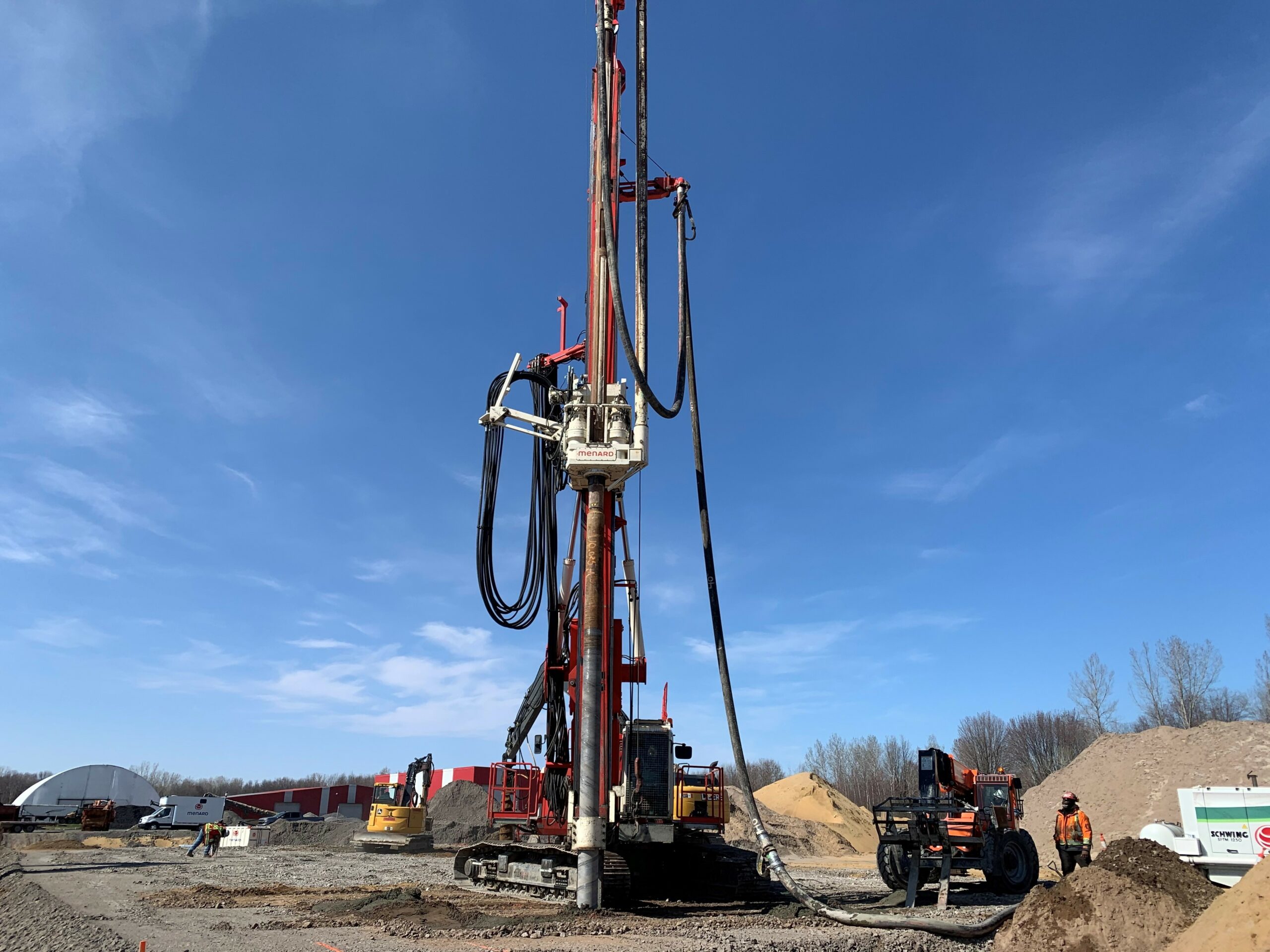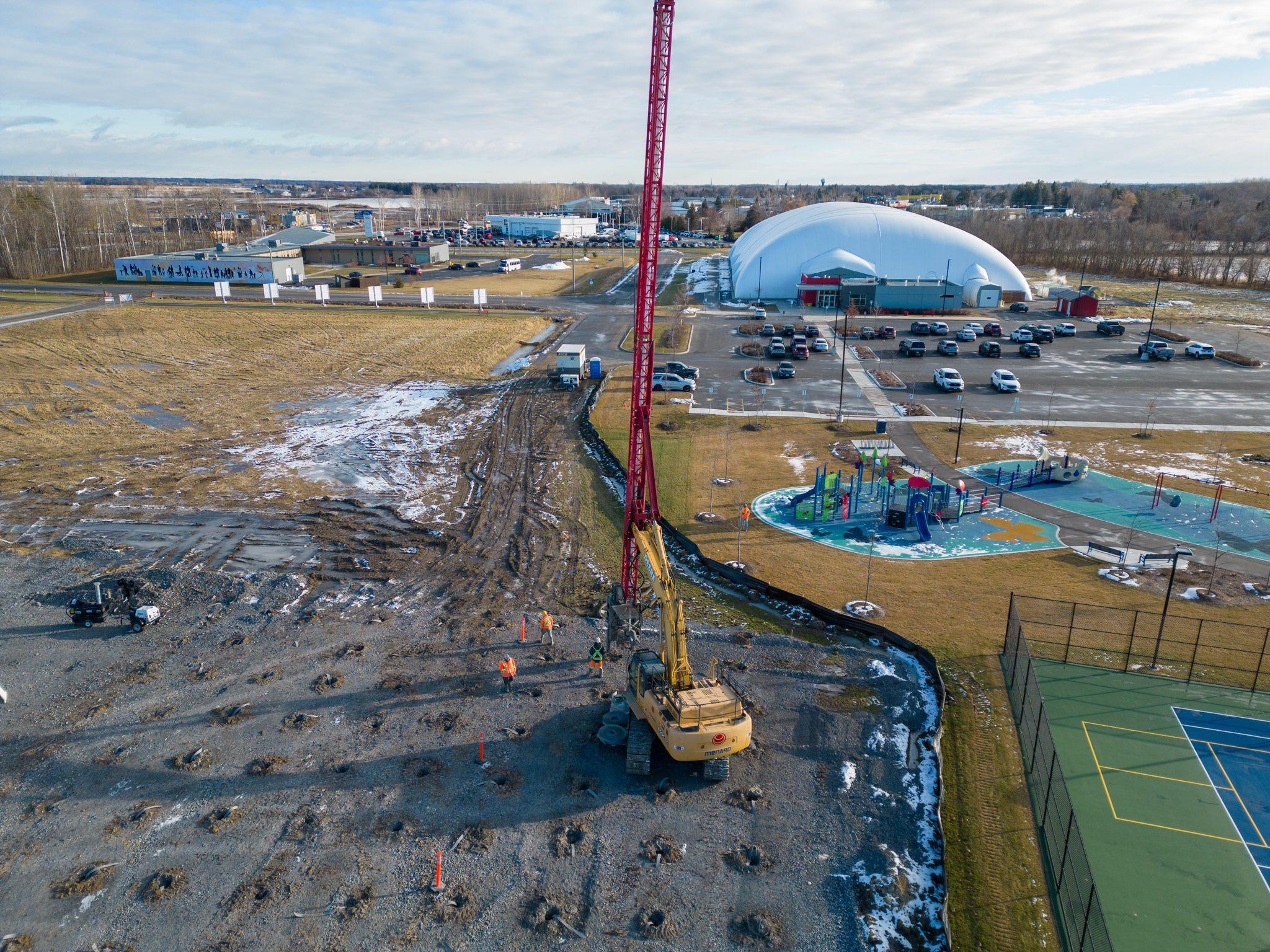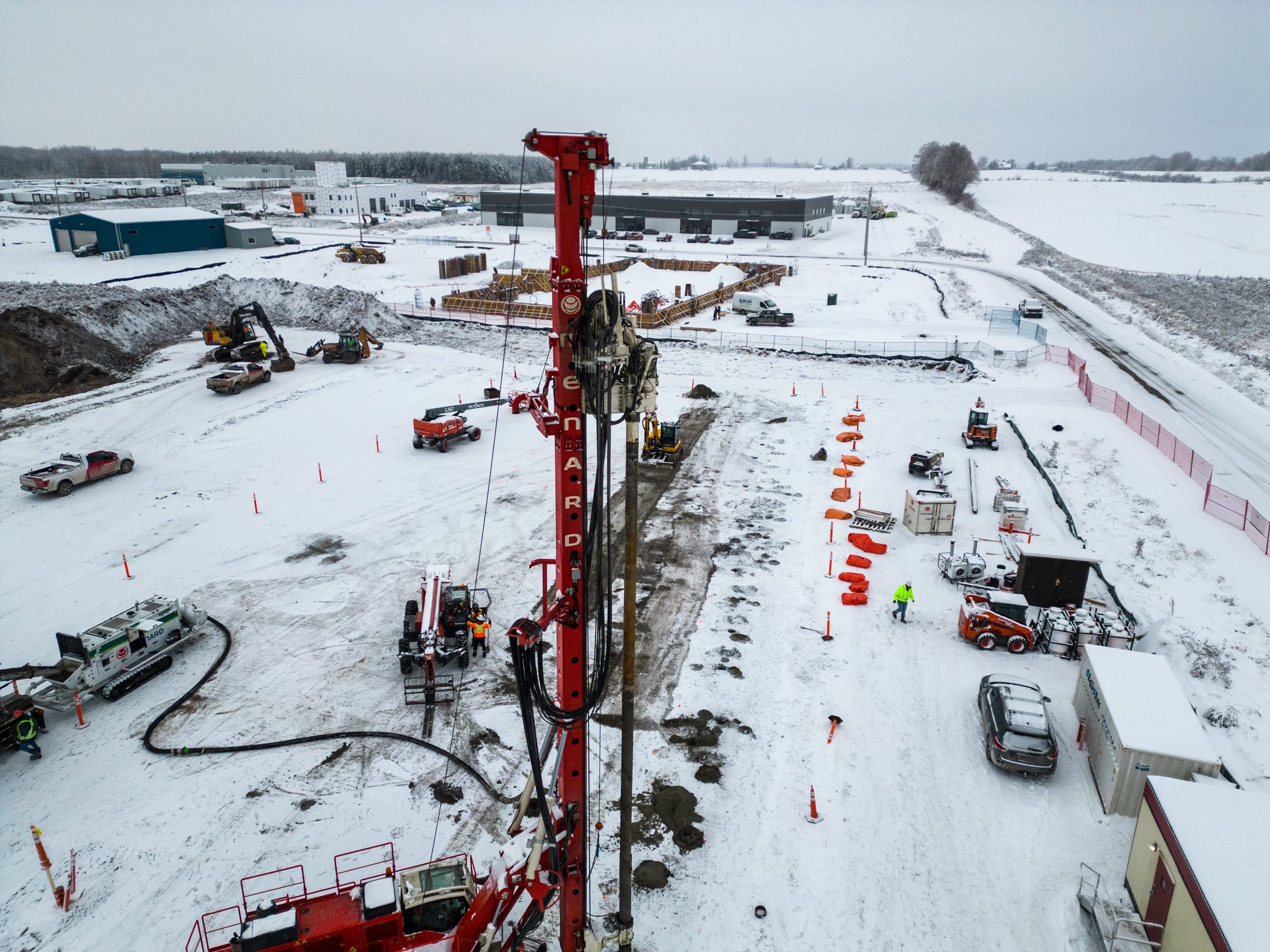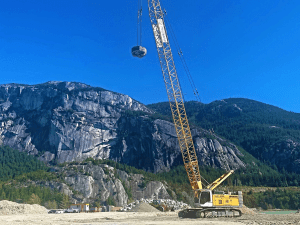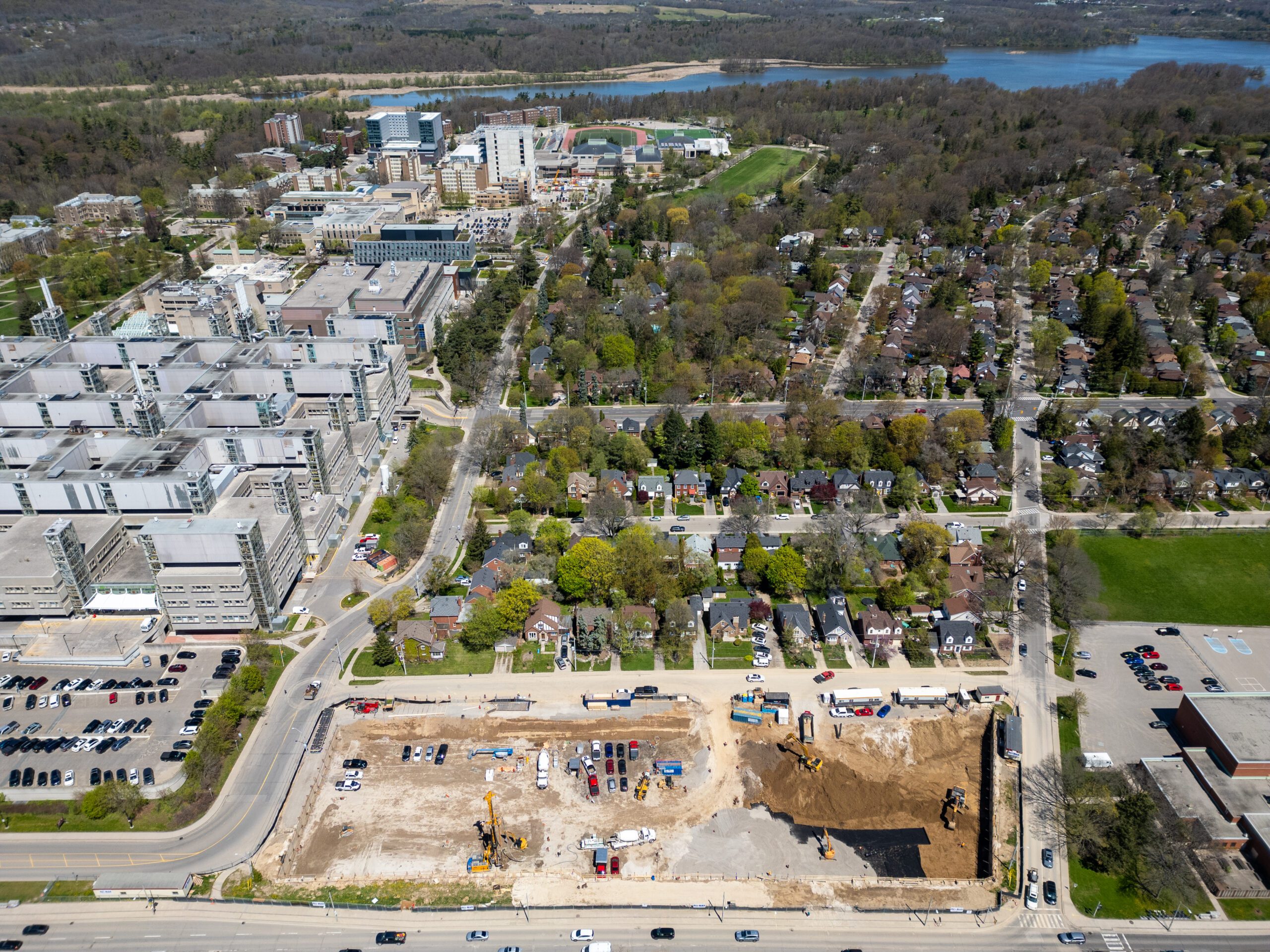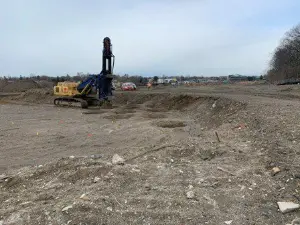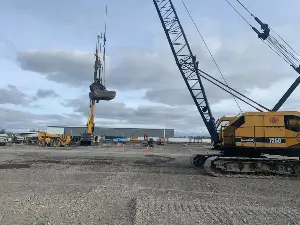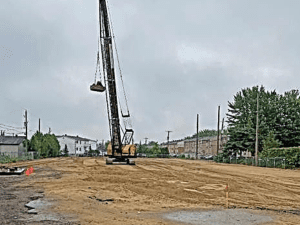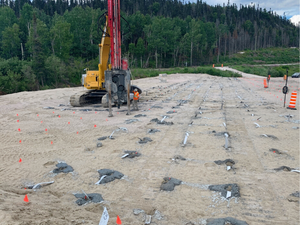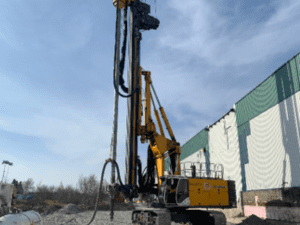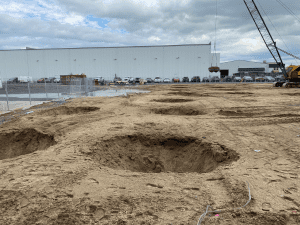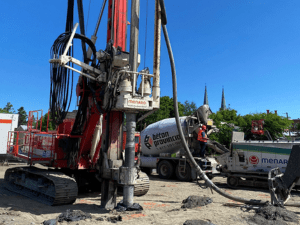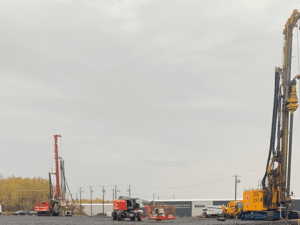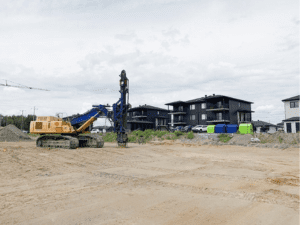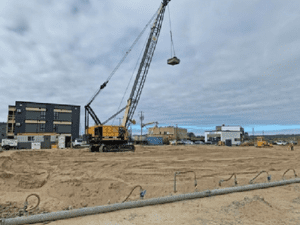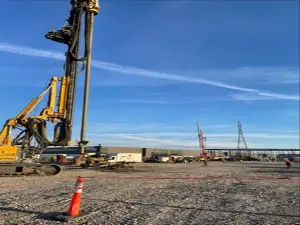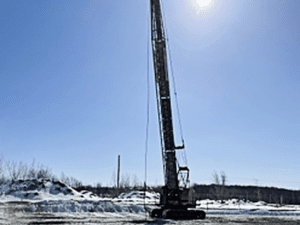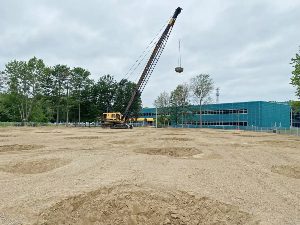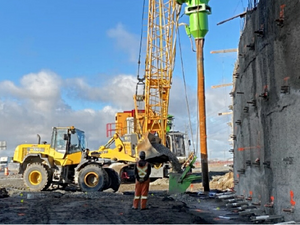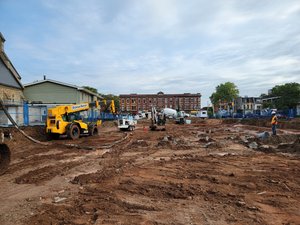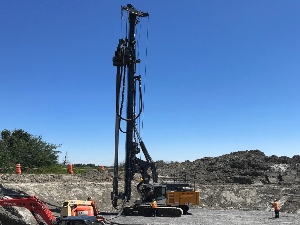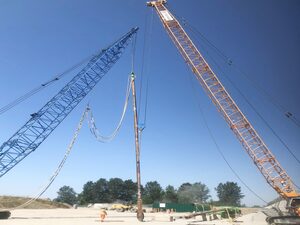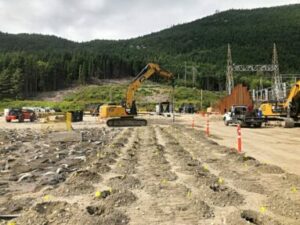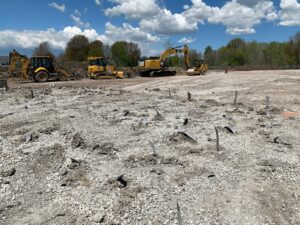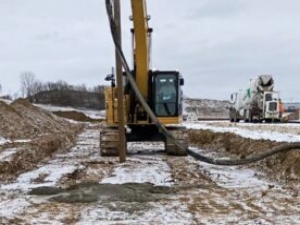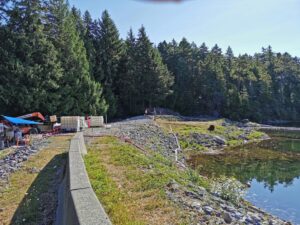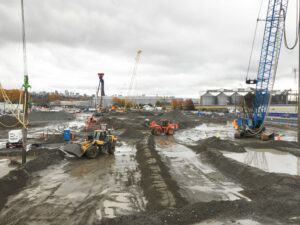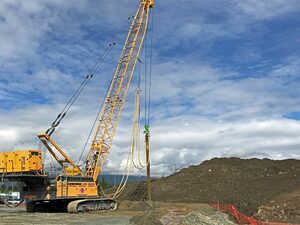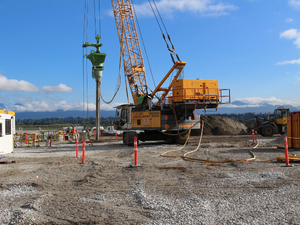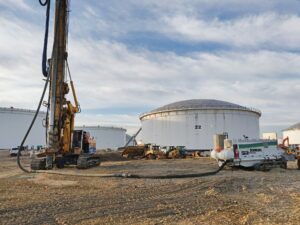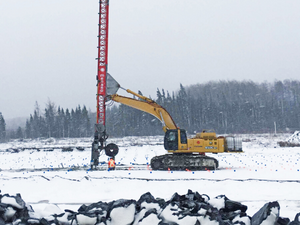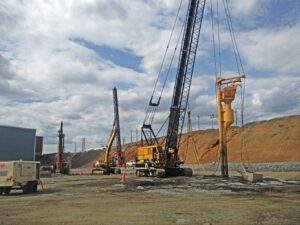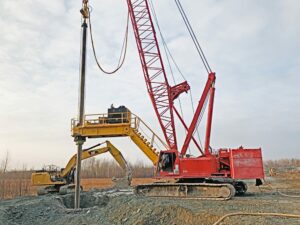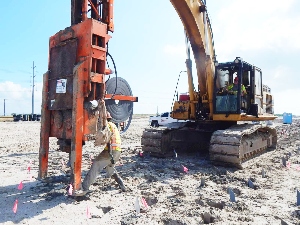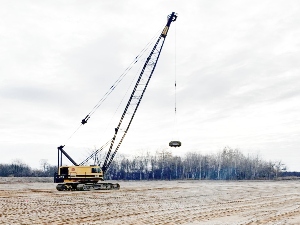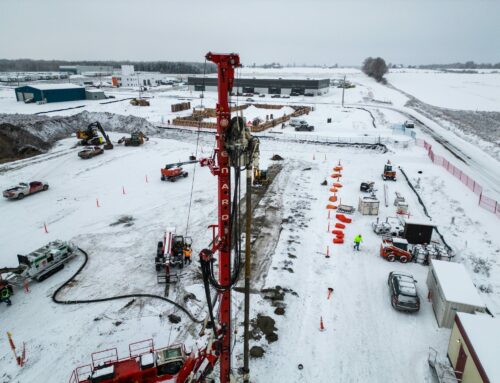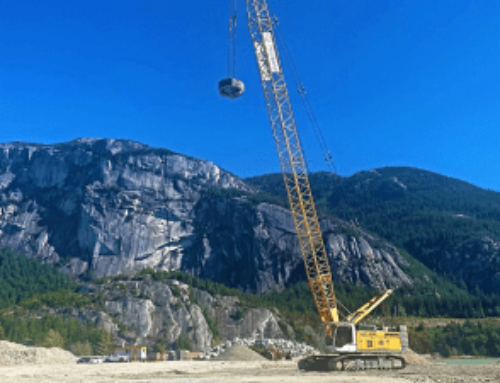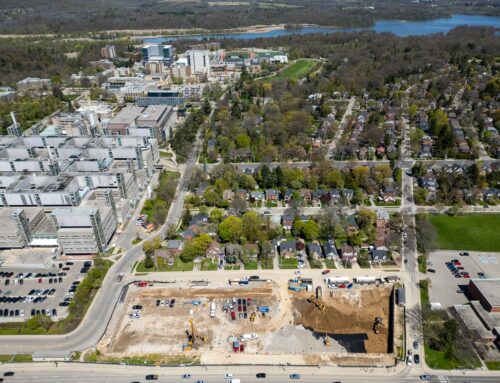Selected Techniques:
Dynamic Compaction
Controlled Modulus Columns (CMCs)
Treatment Area:
1 784 m²
After performing Dynamic Compaction in 2021 to mitigate the potential for liquefaction and increase the bearing capacity of the foundations of the plant located on Avenue Jean Demers in Bécancour, Quebec, Menard Canada was commissioned by Frare Gallant to improve the soils under the specific slabs in the factory using the Controlled Modulus Column (CMC) technique.
Ground Conditions
The geotechnical data extracted from the drilling reports indicated the following soil profile:
- A layer of organic soil on the surface (layer excavated during land clearing and preparation of the work platform).
- Brown to gray fine sand with traces of loose silt over a thickness of between 6m and 7.5m.
- A gray silty clay with sand lenses over a thickness of around 2m.
- Silty sand with gray sandy silt beyond to a depth of about 12m
- A moraine of dense silty fine sand
- Rock at a depth of about 17m.
The water table was encountered approximately 2m deep.
Menard Canada Solution
Due to the implementation of Dynamic Compaction in 2021, each location of CMC had to be pre-drilled to a depth of +- 5m in order to allow the auger to reach the required depth. The deep levels (up to 5m deep in relation to the level of intervention) were carried out using a tool developed by Menard Canada. Loading tests made it possible to validate the behaviour of the CMCs as well as the geotechnical hypotheses taken within the framework of the dimensioning calculations to respect the settlements of 25mm under loads which varied between 50 kPa and 130 kPa.

